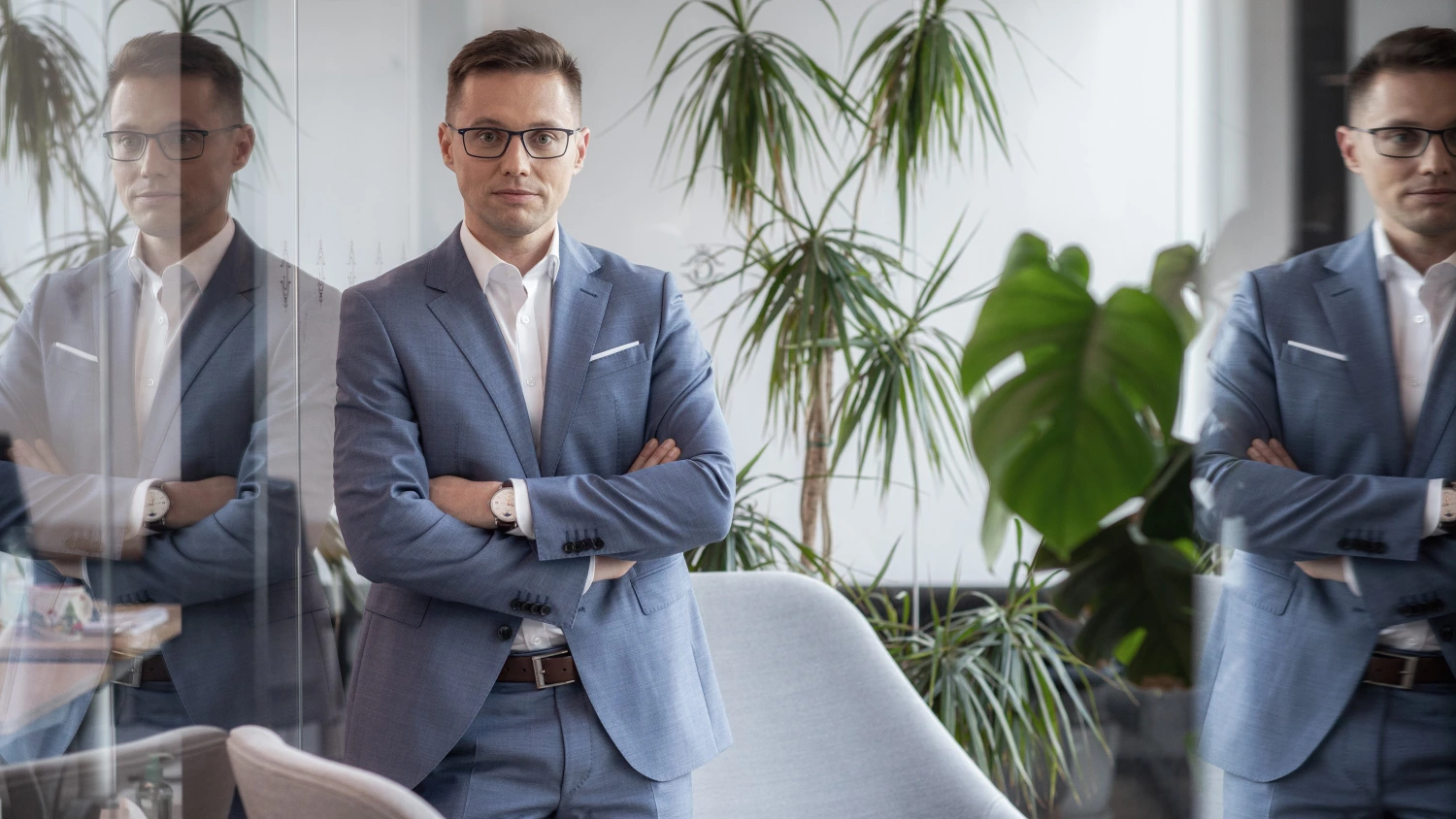
According to the last few months’ most active investor on the Slovak market, investment activity is returning to normal. Martin Šmigura, investment manager of WOOD & Company’s real estate operations in Slovakia, talked to Property Forum about the company’s recent investment deals and shared his market expectations.
WOOD & Company recently obtained a record loan to refinance the debt of the Aupark shopping centre in Bratislava. What can you tell us about how this transaction came to life? How have financing conditions changed since the start of the pandemic?
Aupark Bratislava has a specific position in the Slovak commercial real estate segment. It is premium a retail asset with over 12 million annual client visits, a GLA of 59,600 sqm, 231 retail units and 2,200+ parking spaces. And recent research has also confirmed it as Bratislava’s most popular shopping centre. We had great respect for all of this - after all, it was the largest single-asset real estate transaction in Slovakia’s history.
Discussions with the original owner URW (Unibail-Rodamco-Westfield) were proper and effective throughout the whole process, which is underlined by the final agreement having been reached during the hard lockdown. The process was extremely complex - lasting almost 2 years and involving over 200 professionals.
The issue of funding was also an interesting challenge. Due to the uncertainty surrounding COVID, it was not easy to maintain banks’ interest - as they themselves could not accurately assess the pandemic’s impact on the market. In addition, it was a record transaction in a relatively small market, in which banks already have shares in the financing of other shopping centres. In the end, however, it turned out well.

Martin Šmigura
Director
WOOD & Company
Retail was hit hard by COVID-19 and many concerns have been raised about e-commerce's potential long-term impacts on the sector. Do you have faith in retail as an investment product? How do you expect Aupark Bratislava to perform in the post-pandemic economy?
This question needs a long-term perspective. We all know that e-commerce grew during the pandemic - yet the pandemic also showed its limits. E-commerce proved a good solution for electronics, books and consumer goods. But in the case of clothing, footwear, services, gastronomy, and entertainment, e-commerce did not offer an alternative that could threaten traditional stores. And these are the types of goods and services that a shopping centre such as Aupark Bratislava thrives on.
Aupark is a shopping centre orientated towards the middle- and upper-income class, i.e. the target group least affected by the pandemic’s financial impact. Shoppers’ fast return to shopping centres is also backed up by footfall data, which shows a rapid return to pre-crisis levels.
In addition, the National Bank of Slovakia recently forecast Slovak economic growth above 5 percent. It is recognised that economic recovery is most quickly reflected in retail, and through the acquisition of Aupark we have acquired one of the sector’s Slovak portfolio flagships.
What were the main drivers behind your increased activity on the acquisition front in recent months?
In addition to Aupark, this March, our real estate portfolio also acquired the Bratislava office buildings BBC 1 and BBC 1 Plus from Austrian real estate group CA Immo. These are assets with a GLA of 25,500 sqm. In both cases, it was the result of almost two years’ work. We are also close to agreeing on our first acquisition in Warsaw - an office building with a quality tenant mix and approximately 95 percent occupancy.
We take encouragement in investing optimistically because the response of fiscal and monetary policymakers to the crisis was immediate and robust. The European Central Bank devised a pandemic bond repurchase, which it has incrementally increased to the current €1.85 trillion. And the European Commission has also approved the €750 billion NextGenerationEU programme. Monetary and budgetary authorities, therefore, responded in a diametrically opposite way to that of the 2008 crisis. At that time, governments resorted to spending cuts and savings. Another positive aspect of the current crisis is its non-economic cause. It is therefore not a crisis of liquidity or confidence in the economy’s future.
Our investment decisions in the real estate segment were not even threatened by the home office ‘elephant in the room’. According to Eurostat data, only 11.6 percent of employed Slovaks were affected by home office last year. In pre-pandemic 2019, 9.5 percent worked from home regularly or occasionally. For most working Slovaks, home office is just fiction. Jobs that can be performed from home represent only a 29 percent share in Slovakia, which is the lowest in European economies.
But we nevertheless analyse every single investment opportunity in depth and from every angle. On the other hand, we do not want to be passive. We look at crises as opportunities, as they have been throughout WOOD & Company's 30-year history.
Has the pandemic altered your risk perception? Are you looking for different types of assets than pre-COVID?
Rather the contrary. The corona crisis has confirmed that we have been right in orientating ourselves towards defensive sectors of the economy. In addition to real estate in Slovakia, we also own assets in the pharma production (Saneca Pharmaceuticals), medical devices (Chirana T.Injecta), and waste management (KOSIT and ewia) sectors. These are all markets with previous growth and which have benefited from the new situation.
In this respect, investing in real estate may seem the riskiest. Yet qualified forecasts of economic development - combined with the lockdown not hitting as hard as expected - ensure we’re comfortable with our decisions. For example, our real estate office sub-fund reported a yield of 8.4 percent in the pandemic year 2020. Since its inception in 2017, annualized revenue has been 12 percent, well above the market average.
Have you noticed any significant changes in pricing? What are your overall expectations for the Slovak investment market in 2021?
The Bratislava real estate market is returning to normal. The number and volume of transactions is growing again, activity is strong - which indicates the segment’s viability. We are interested in how the potential third COVID wave will affect the development of the market. The valuation of our assets is stable compared to the pre-COVID period. It was again confirmed that quality real estate has a higher resistance to potential market fluctuations.
WOOD & Company is also involved in the development of an office project, Lakeside Park 02 in Bratislava. How is the construction and leasing progressing? What are your expectations for a ‘new normal’ on the office market?
Lakeside Park 02 with 14,370 sqn GLA is now in the second phase of the shell construction. The highest floors are being completed, followed by the facade and interior masonry work. Thanks to the banking sector’s trust, we received a €24 million project loan in the winter. We already have several tenants contracted for the building.
Lakeside Park 02 is known as an anti-COVID building. We have selected technologies that better reflect new demands for the safety of tenants and their employees. As a priority, we also modified the building’s facade and increased the number of openable windows. As for other specific solutions, we focused on air conditioning and recovery technologies that keep exhaust and supply air separate.
And we have also implemented several measures to reduce the need to touch objects. For example, calling lifts will be contactless - just scan a card and the system will automatically send the lift to the required floor. Lakeside Park 02 will feature even more similar solutions.



